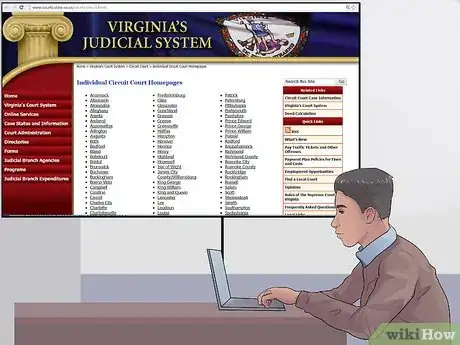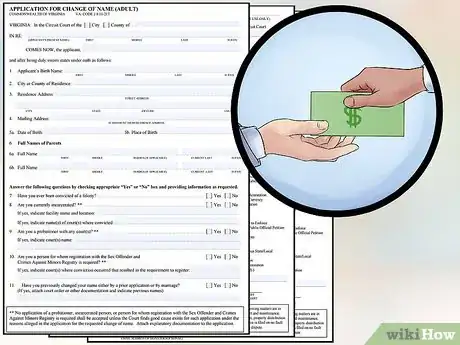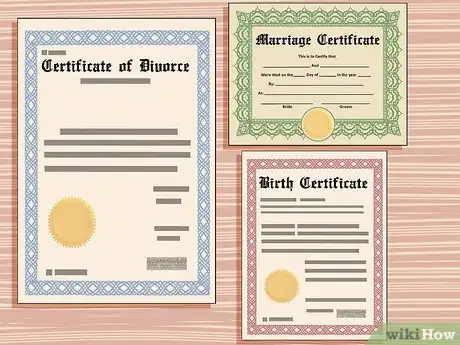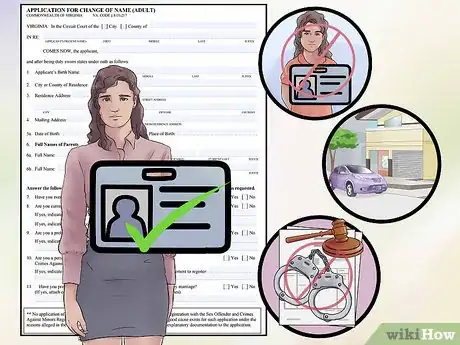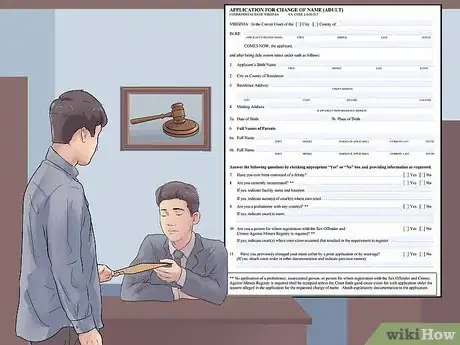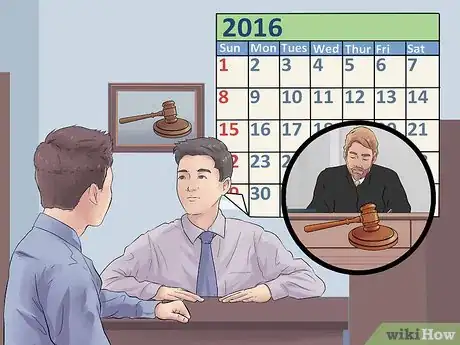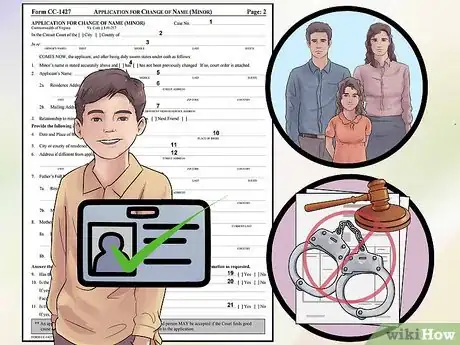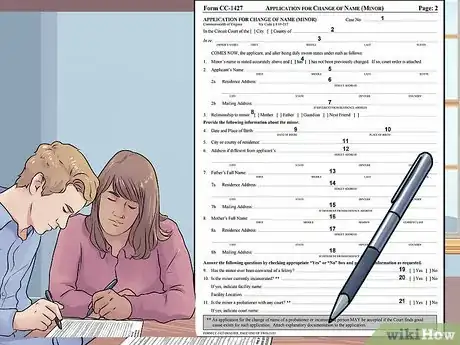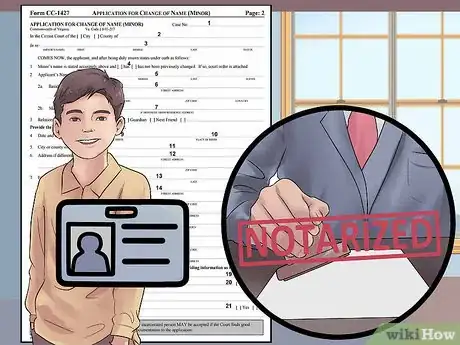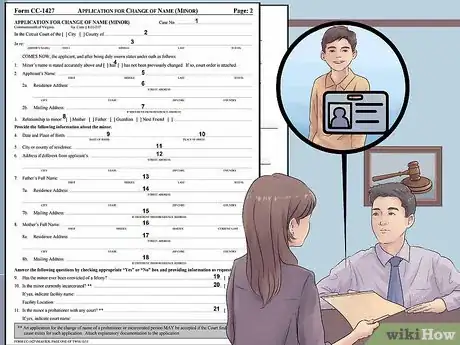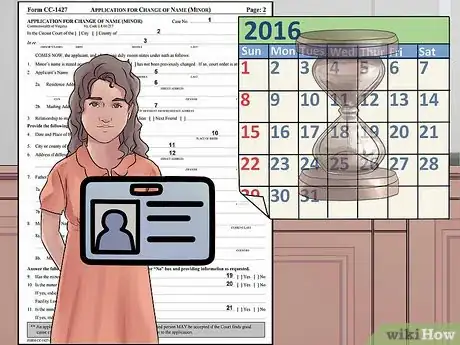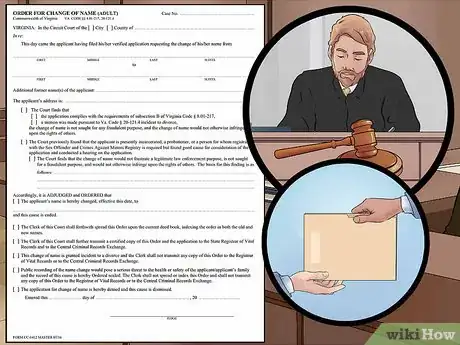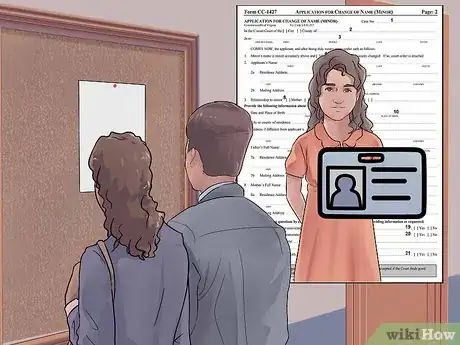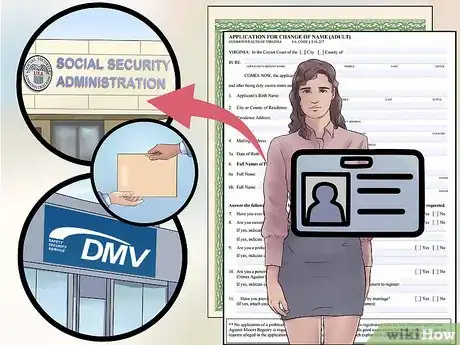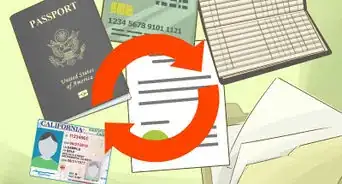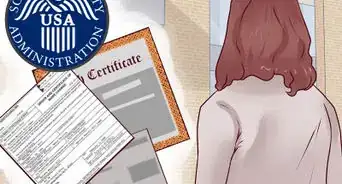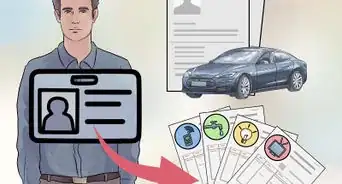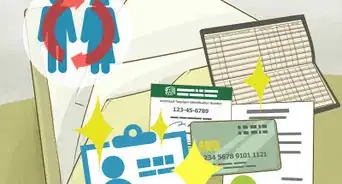This article was co-authored by Clinton M. Sandvick, JD, PhD. Clinton M. Sandvick worked as a civil litigator in California for over 7 years. He received his JD from the University of Wisconsin-Madison in 1998 and his PhD in American History from the University of Oregon in 2013.
There are 12 references cited in this article, which can be found at the bottom of the page.
wikiHow marks an article as reader-approved once it receives enough positive feedback. In this case, 84% of readers who voted found the article helpful, earning it our reader-approved status.
This article has been viewed 147,987 times.
If you live in Virginia and you wish to change your name (after a marriage, divorce, on behalf of a minor child, or for other reasons), certain steps must be followed to accomplish the name change properly and legally. Virginia name change law is governed by Section 8.01-217 of the Code of Virginia. [1] Fortunately, Virginia provides the application materials online, and the name change process, while not automatic, is fairly straightforward.
Steps
Finding Your Circuit Court and the Applicable Forms
-
1Find your local circuit court. In Virginia, the local courts for each city or county are known as 'circuit courts.' To find your circuit court, go to the following website and click on your city or county: [2] The link will take you to your court's website, which will provide information such as the court's address, phone numbers, and operating hours, and might provide additional information you may need to submit the name change forms.
-
2Locate applicable name change forms. Luckily, Virginia makes the name change forms easily accessible via the Commonwealth's website. [3] Note that the forms are fillable online, but you cannot save information typed into them. If you can print the forms immediately after typing the information, then do so. If you need some additional time to fill out the forms, print the forms first, then neatly hand-write the information in them. Each of the applicable name change forms also offers instructions for correctly completing the forms.
- Application for Change of Name (Adult)(Form CC-1411) can be found at [4] and the instructions are here: [5]
- Application for Change of Name (Minor)(Form CC-1427) can be found at [6] and the instructions are here: [7]
- The Cover Sheet for Filing Civil Actions (Form CC-1416) can be found at [8] and the instructions are here: [9]
Advertisement -
3Calculate your application fees. Application fees will range depending on your circuit court. To get an approximate fee calculation, go to the following website and fill in your information. [10]
-
4Gather other documentation. If you are seeking a name change after a marriage, locate your birth and marriage certificates. If you are seeking a name change after a divorce, locate your birth, marriage, and divorce certificates. For a minor, locate the minor's birth certificate. If one or both of the minor's biological parents are deceased or have terminated parental rights, locate that documentation. If you seek a name change for any other reason, make sure you have your birth certificate in hand.
Submitting the Forms - Adult Name Change
-
1Check the requirements. Before submitting your forms, make sure you fulfill all the requirements for an adult name change. [11]
- The applicant must have lived in Virginia and the city or county of application for at least the past six months.
- The applicant must file the application in the circuit court where he/she resides (or is incarcerated).
- The applicant must be over 18 years of age at the time of the application.
- The applicant must have proper and reasonable cause for the name change.
- The applicant must not be seeking a name change to avoid debt, defraud creditors, or other nefarious reasons.
-
2Fill out the application. The application seeks information such as current full name (birth name), proposed full name, parental information, address, and a certification that the applicant does not seek the name change for fraudulent purposes. Do not sign the form.
-
3Get the application notarized. Bring your completed application to a notary public. You will sign the application in front of the notary, who will attest to your signature. You may need to pay a small fee for the notary's service. Notaries can commonly be found in the following places:
- Banks
- Post offices, UPS Store, etc.
- Law offices
-
4Bring your paperwork to court. Take two copies of the application and cover sheet, fees, a self-addressed stamped envelope, and supporting documentation to your circuit court. Check the instruction forms that go with the application materials to make sure you've completed everything to the best of your ability. Make at least two copies of all your application materials, and save a copy for your records. The clerk of court will tell you if you need to provide additional information to complete your application.
-
5Be prepared to receive a hearing date. Most of the time, courts will grant name changes "on the papers," which means without requiring an in-person hearing. But if the court receives an objection to the name change, or if the court suspects the name change is being sought for an improper purpose, the court may order a hearing, which you will have to attend. If the court orders a hearing, consider consulting with an attorney to make sure you are prepared.
Submitting the Forms - Minor Name Change
-
1Check the requirements. Before submitting your forms, make sure you, as the adult applicant, fulfill all the requirements for a minor's name change. [12]
- The adult applicant must be one of the minor's biological parents. If both biological parents are deceased or have terminated parental rights, then the minor's "next friend" (person legally entitled to submit the application on the minor's behalf) may prepare the application.
- The adult applicant must have lived in Virginia and the city or county of application for at least the past six months.
- The adult applicant must file the application in the circuit court where he/she and the minor reside.
- The adult applicant must be over 18 years of age at the time of the application.
- The minor must be under 18 years of age at the time of the application.
- The applicant must have proper and reasonable cause for the name change.
- Both biological parents should join the application if possible. If one of the biological parents refuses to join or cannot be located, the applicant must serve that parent with notice of the application, and the court will order a hearing if the non-joining parent objects. The court may waive the hearing if the applicant provides evidence that alerting the non-joining parent could seriously threaten harm to the minor or applicant if he/she found out about the proposed name change.
-
2Fill out the application. The application seeks information such as current full name (birth name), proposed full name, parental information, address, and a certification that the applicant does not seek the name change for fraudulent purposes. Do not sign the form.
-
3Get the application notarized. Bring your completed application to a notary public. You will sign the application in front of the notary, who will attest to your signature. You may need to pay a small fee for the notary's service. Notaries can commonly be found in the following places:
- Banks
- Post offices, UPS Store, etc.
- Law offices
-
4Bring the paperwork to court. Take two copies of the application and cover sheet, fees, a self-addressed stamped envelope, and supporting documentation to your circuit court. Check the instruction forms that go with the application materials to make sure you've completed everything to the best of your ability. Make at least two copies of all your application materials, and save a copy for your records. The clerk of court will tell you if you need to provide additional information to complete your application.
-
5Be prepared to receive a hearing date. Most of the time, courts will grant name changes "on the papers," which means without requiring an in-person hearing, especially where both biological parents join the name change application. But if the court receives an objection to the name change, or if the court suspects the name change is being sought for an improper purpose, the court may order a hearing, which the adult applicant will have to attend. If the court orders a hearing, consider consulting with an attorney to make sure you are prepared.
Finalizing the Name Change
-
1Receive the court order. If the court approves the name change on the papers, or if the name change is approved after a hearing, the court will mail the signed order to you in the envelope you provided. This will likely take several weeks, and possibly two months or more. The name change is official when you receive the signed order.
-
2Understand that the name change will be public. The court's order will show both the old and new names and the applicant's current address. This information will become public record unless the judge waives publication to ensure the applicant's safety. If you are concerned about safety, note this on the application and/or at the hearing.
-
3Complete name change forms with other government agencies. This includes the Social Security Administration, the Department of Motor Vehicles, and other applicable government agencies. The court's order will not automatically change your name with any other government agency. You must complete the necessary paperwork yourself.
- For example, instructions for changing your name with the Virginia DMV are located here: [13]
References
- ↑ https://leg1.state.va.us/cgi-bin/legp504.exe?000+cod+801-217
- ↑ www.courts.state.va.us/courts/circuit.html
- ↑ http://www.courts.state.va.us/forms/circuit/civil.html
- ↑ http://www.courts.state.va.us/forms/circuit/cc1411.pdf
- ↑ http://www.courts.state.va.us/forms/circuit/cc1411inst.pdf
- ↑ http://www.courts.state.va.us/forms/circuit/cc1427.pdf
- ↑ http://www.courts.state.va.us/forms/circuit/cc1427inst.pdf
- ↑ http://www.courts.state.va.us/forms/circuit/cc1416.pdf
- ↑ http://www.courts.state.va.us/forms/circuit/cc1416inst.pdf
